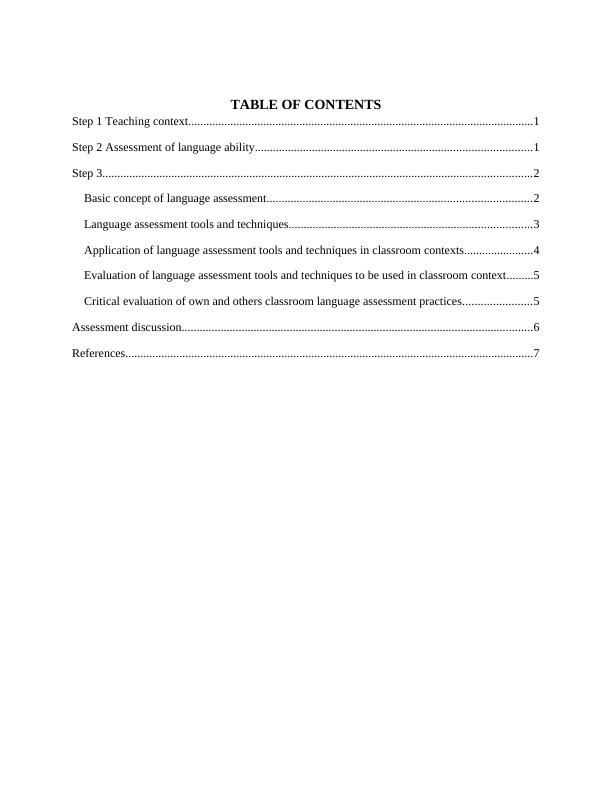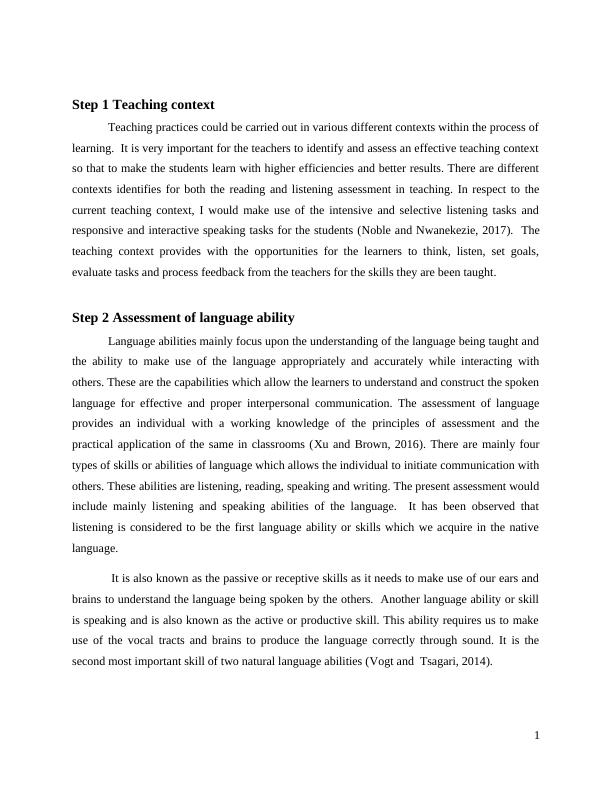Language Assessment: Principles, Tools, and Techniques for Effective Classroom Learning
Design an assessment for language assessment and discuss how it satisfies fundamental principles of language assessment.
10 Pages2828 Words311 Views
Added on 2023-06-04
About This Document
This article discusses the principles, tools, and techniques of language assessment for effective classroom learning. It covers the importance of practicality, reliability, validity, authenticity, and washback in language assessment. It also explores different language assessment tools and techniques and their application in classroom contexts. The article concludes with a critical evaluation of own and others' classroom language assessment practices.
Language Assessment: Principles, Tools, and Techniques for Effective Classroom Learning
Design an assessment for language assessment and discuss how it satisfies fundamental principles of language assessment.
Added on 2023-06-04
ShareRelated Documents
End of preview
Want to access all the pages? Upload your documents or become a member.
Teaching Practice: Lesson Plan 3
|10
|616
|187
Critical Evaluation of a Spoken and Vocabulary Skills Material for ESL Learners
|24
|4860
|84
Teaching of Listening and Speaking in ESL
|11
|2601
|438
Teaching English to Speakers of Other Languages: Curriculum and Resources
|8
|2302
|216
The Concepts of Best Practices
|8
|1312
|35
Teaching English to Young Learners
|14
|4046
|54



